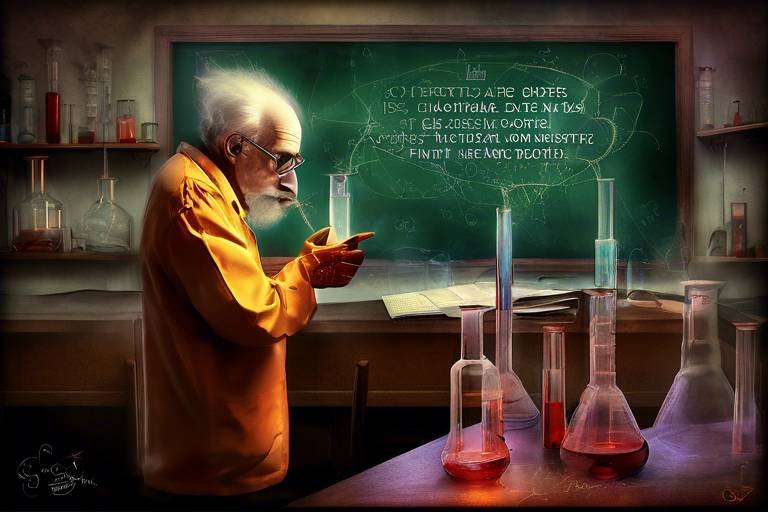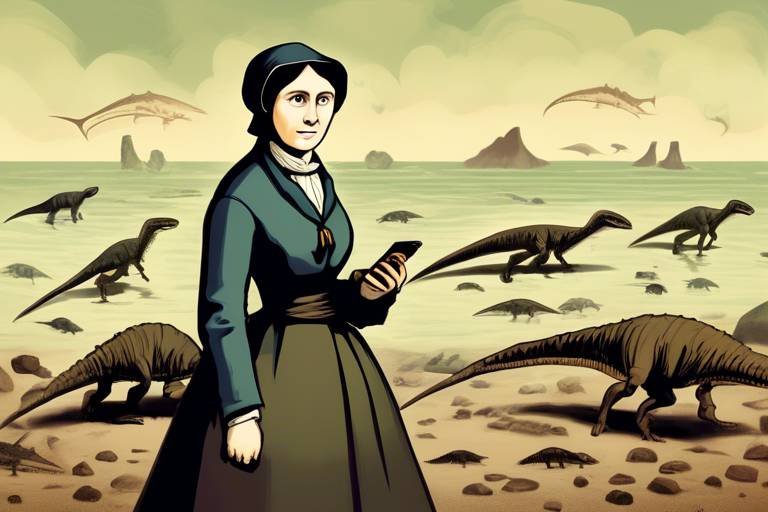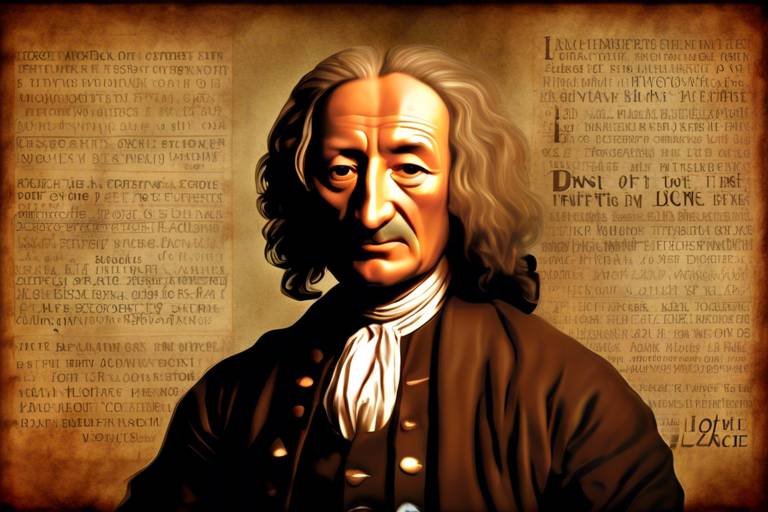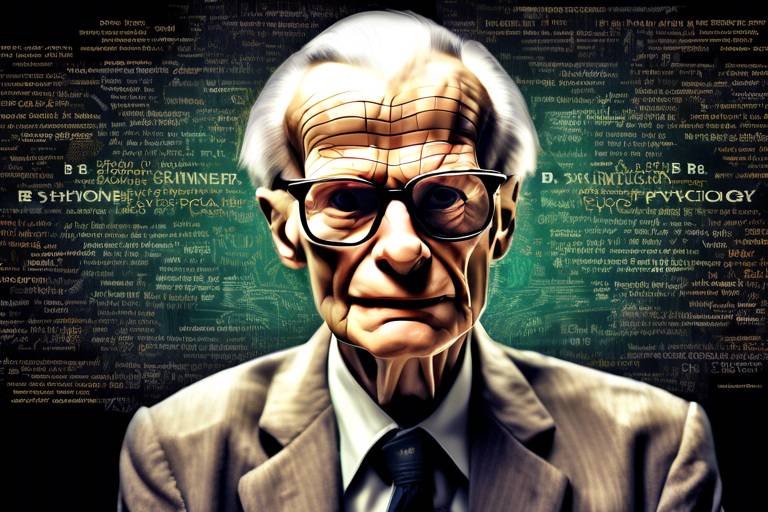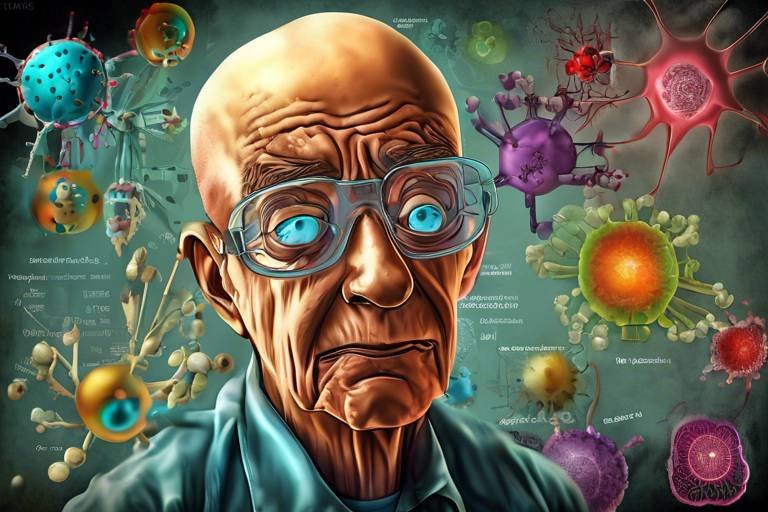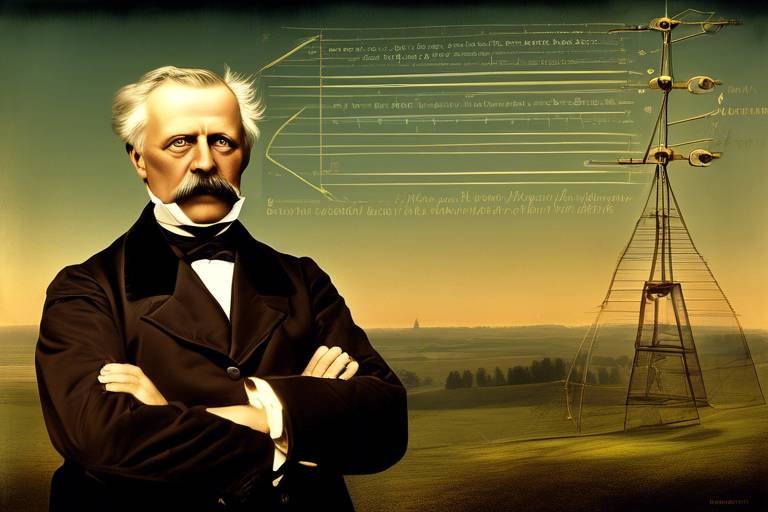The Contributions of Alan Turing to Computer Science
Alan Turing is often heralded as one of the most significant figures in the history of computer science. His innovative ideas and theories not only laid the groundwork for modern computing but also transformed the way we understand intelligence and computation. Born in 1912, Turing's journey into the realm of mathematics and logic was marked by a profound curiosity and an exceptional intellect that would eventually lead him to create concepts that are still pivotal today. But what exactly did Turing contribute to the field? Let’s dive into his groundbreaking theories, inventions, and the lasting legacy he left behind.
One of Turing's most notable contributions is the concept of the Turing Machine. Imagine a machine that can simulate any algorithmic process—this is precisely what Turing envisioned. The Turing Machine serves as a foundational model for understanding computation and algorithms, and it revolutionized the theoretical framework of computer science. By formalizing the concept of computation, Turing provided a blueprint that would guide future generations of computer scientists and engineers in their quest to develop programming languages and software systems.
Turing's impact extends beyond theoretical constructs; he played a crucial role during World War II by breaking the Enigma code, a feat that not only showcased his exceptional skills in cryptography but also demonstrated the practical applications of his theoretical work. His success in this arena highlighted the importance of computational theory in solving real-world problems, further solidifying his status as a pioneer in the field.
Turing's exploration of artificial intelligence culminated in the formulation of the Turing Test, which assesses a machine's ability to exhibit intelligent behavior indistinguishable from that of a human. This concept has sparked significant philosophical debates about the nature of consciousness and intelligence, prompting questions such as: Can machines think? What does it mean to be intelligent? These discussions continue to resonate in both computer science and cognitive science as researchers strive to create machines that can learn and adapt.
Alan Turing's legacy is not just confined to academic circles; it is celebrated through various honors and memorials that reflect his monumental contributions to computer science. In today’s digital age, his work remains incredibly relevant, inspiring new generations of scientists and engineers to push the boundaries of what is possible. As we explore the depths of artificial intelligence and advanced computing, we are constantly reminded of Turing's profound influence on the field.
- What is a Turing Machine?
A Turing Machine is a theoretical construct that defines a mathematical model of computation, illustrating how algorithms can be executed. - How did Alan Turing contribute to World War II?
Turing played a pivotal role in breaking the Enigma code, which was crucial to the Allied forces' success in the war. - What is the Turing Test?
The Turing Test is a measure of a machine's ability to exhibit intelligent behavior equivalent to, or indistinguishable from, that of a human. - Why is Turing's work still relevant today?
Turing's theories laid the foundation for modern computing and artificial intelligence, influencing ongoing research and development in these fields.

[Turing's Early Life and Education]
Alan Turing was born on June 23, 1912, in Maida Vale, London, into a family that valued education and intellectual pursuits. From a young age, Turing exhibited a remarkable aptitude for mathematics and science, often immersing himself in complex problems that would later define his career. His early education began at St. Michael's School, where his teachers quickly recognized his exceptional talent. They encouraged him to explore various subjects, but it was mathematics that truly captivated him.
As Turing progressed through school, he faced challenges that would shape his character and intellect. He attended Sherborne School, a prestigious boarding school, where he struggled with the strict environment and the traditional teaching methods. Despite these hurdles, Turing excelled in mathematics, often spending hours delving into mathematical theories and concepts. His passion for logic and problem-solving became evident during this time, setting the stage for his future innovations.
In 1931, Turing enrolled at King's College, Cambridge, where he studied mathematics. His time at Cambridge was transformative, as he was exposed to the works of great mathematicians and logicians such as Gottfried Wilhelm Leibniz and Georg Cantor. Turing's exceptional performance earned him a scholarship, and he graduated in 1934 with first-class honors. It was during this period that he first encountered the concept of computation, which would become a cornerstone of his future work.
After completing his undergraduate studies, Turing pursued a Ph.D. at Princeton University, where he worked under the guidance of the renowned mathematician Alonzo Church. His doctoral dissertation, titled "Systems of Logic Based on Ordinals," introduced the world to the concept of what we now call the Turing Machine. This theoretical construct not only showcased Turing's brilliance but also laid the foundation for modern computer science.
In summary, Alan Turing's early life and education were marked by a relentless pursuit of knowledge and a passion for mathematics. His formative years played a critical role in shaping his innovative thinking and problem-solving abilities. The groundwork laid during this time would ultimately lead him to become one of the most influential figures in the history of computer science, changing the way we understand computation and algorithms forever.

[The Turing Machine Concept]
The Turing Machine is not just a theoretical construct; it's a revolutionary idea that fundamentally changed the landscape of computer science. Proposed by Alan Turing in 1936, this concept serves as a bridge between abstract mathematics and real-world computing. Imagine a machine that can manipulate symbols on a strip of tape according to a set of rules—this is the essence of the Turing Machine. It’s like a digital wizard, capable of performing any computation that can be algorithmically defined, which is a pretty mind-blowing idea!
At its core, the Turing Machine consists of a few essential components: a tape (which acts as the machine's memory), a head (which reads and writes symbols on the tape), and a set of rules that dictate how the machine operates. This simple yet powerful model allows us to explore the limits of what can be computed. Think of it as the blueprint for all modern computers, where each component plays a crucial role in processing information.
To grasp the significance of the Turing Machine, we need to delve into its definition and functionality. A Turing Machine is formally defined as a 7-tuple (Q, Σ, Γ, δ, q0, q_accept, q_reject), where:
| Symbol | Description |
|---|---|
| Q | A finite set of states |
| Σ | A finite set of input symbols |
| Γ | A finite set of tape symbols |
| δ | A transition function that dictates the machine's actions |
| q0 | The initial state |
| q_accept | The accepting state |
| q_reject | The rejecting state |
This formal structure allows the Turing Machine to perform computations through a sequence of state transitions based on the symbols it reads. When you think about it, this is akin to following a recipe in the kitchen: you start with your ingredients (input symbols), follow the steps (transition rules), and end up with a delicious dish (the output). This analogy highlights how the Turing Machine processes information in a systematic and predictable manner.
Turing's work on the Turing Machine was groundbreaking, particularly in the realm of computability theory. He established key principles that help us understand the limits of what can be computed. For instance, Turing proved that there are problems that no algorithm can solve, famously exemplified by the Halting Problem. This realization was like discovering that not all puzzles have solutions, which has profound implications for computer science and mathematics.
Moreover, the Turing Machine laid the groundwork for the concept of decidability, which helps researchers determine whether a problem can be solved by an algorithm. This has led to a deeper understanding of algorithmic processes and the boundaries of computation.
While the Turing Machine may seem like a theoretical exercise, its implications extend far beyond academia. In fact, many modern programming languages and software development methodologies are built on principles derived from Turing's ideas. For example, the concept of a virtual machine in programming is reminiscent of the Turing Machine, as it abstracts hardware details to allow for more flexible and efficient code execution.
Furthermore, the Turing Machine model is instrumental in the development of compilers and interpreters, which translate high-level programming languages into machine code. This process is essential for enabling computers to understand and execute complex instructions, showcasing the enduring relevance of Turing's work in our digital age.
In summary, the Turing Machine is more than just a theoretical model; it is a cornerstone of computer science that continues to influence how we understand computation and develop technology. Its simplicity and power serve as a reminder of the genius of Alan Turing and the profound impact he had on the field.

[Definition and Functionality]
The Turing Machine is a theoretical construct that Alan Turing proposed in 1936, and it fundamentally changed how we understand computation. At its core, a Turing Machine consists of a tape (an infinite length of cells) and a head that reads and writes symbols on this tape according to a set of rules. Imagine it as a simple robot with a never-ending scroll of paper that can write, erase, and move back and forth. This model is not just an abstract idea; it provides a clear framework for understanding how machines process information.
To break it down further, let’s look at the key components of the Turing Machine:
- Tape: The tape is divided into discrete cells, each capable of holding a single symbol. The symbols can be anything from numbers to letters, and the tape itself can extend infinitely in both directions.
- Head: The head is the part of the machine that reads and writes symbols on the tape. It can move left or right, allowing it to access different cells on the tape.
- State Register: This keeps track of the current state of the machine. The state can change based on the symbols read and the rules defined.
- Transition Function: This set of rules dictates how the machine reacts to the symbols it reads. Depending on the current state and the symbol under the head, the machine will either change state, write a new symbol, or move the head.
Understanding the functionality of the Turing Machine is crucial because it lays the groundwork for what we now consider computation. The machine operates by following a sequence of steps, which can be viewed as a simple algorithm. When given a specific input, the Turing Machine processes this input through its defined rules, ultimately producing an output. This process of input, processing, and output is the essence of all computing tasks today.
Moreover, the Turing Machine is not just a relic of theoretical computer science. It serves as a powerful model that helps us understand the limits of what can be computed. For instance, if a problem can be solved by a Turing Machine, it is considered computable. On the flip side, if there are problems that a Turing Machine cannot solve, they are deemed non-computable. This distinction is vital for computer scientists because it helps them identify which problems can realistically be tackled with algorithms and which ones lie beyond the reach of computation.
In summary, the Turing Machine is not just a theoretical concept; it is a profound tool that has shaped our understanding of computation. Its definition and functionality highlight the fundamental mechanics of how machines process information, influencing everything from programming languages to the development of modern computers. As we continue to advance in the field of computer science, Turing's model remains a cornerstone, reminding us of the simplicity and elegance of computation.
- What is a Turing Machine? A Turing Machine is a theoretical model that describes how a machine processes information using a tape and a set of rules.
- Why is the Turing Machine important? It provides a foundational understanding of computation and helps identify computable versus non-computable problems.
- Can Turing Machines solve all problems? No, there are problems that are non-computable, meaning they cannot be solved by any algorithm or Turing Machine.

[Impact on Computability Theory]
Alan Turing's contributions to computability theory are nothing short of revolutionary. His groundbreaking work laid the foundation for understanding what can be computed and how efficiently it can be done. Before Turing, the concept of computation was vague and often misunderstood. However, Turing introduced a formal framework that clarified these ideas, allowing future generations of computer scientists to build upon them.
At the heart of Turing's impact is the concept of the Turing Machine, a simple yet powerful model that encapsulates the essence of computation. This theoretical device can simulate any algorithmic process, which means that if something can be computed, a Turing Machine can do it. This realization led to the establishment of key principles in computability theory, such as:
- Decidability: The concept of whether a problem can be solved by an algorithm.
- Complexity: The study of how the resources required for computation grow with the size of the input.
- Church-Turing Thesis: The assertion that anything computable by a human using a pen and paper can also be computed by a Turing Machine.
These principles have profound implications. For instance, the notion of decidability helps in distinguishing between problems that can be solved algorithmically and those that cannot, such as the famous Halting Problem. Turing proved that there is no general algorithm that can determine whether any given Turing Machine will halt or run indefinitely. This was a monumental finding that not only deepened our understanding of computation but also highlighted the limitations of algorithms.
Furthermore, Turing's insights have paved the way for the development of various computational models that are essential in today’s technology-driven world. From programming languages to software design, the principles derived from his work continue to influence how we approach problem-solving in computer science.
In summary, Turing's impact on computability theory has been transformative. His work not only provided a rigorous framework for understanding computation but also inspired countless innovations in technology. As we navigate an increasingly complex digital landscape, Turing's principles remain a guiding light, helping us discern the boundaries of what machines can achieve.
- What is computability theory? Computability theory is a branch of mathematical logic that deals with what problems can be solved by computers and how efficiently.
- Why is the Turing Machine important? The Turing Machine is important because it serves as a fundamental model for understanding computation and algorithms, demonstrating the principles of what can be computed.
- What is the Church-Turing Thesis? The Church-Turing Thesis posits that any computation that can be performed by a human using a method can also be performed by a Turing Machine.

[Real-World Applications]
When we think about the real-world applications of Turing's revolutionary ideas, it's fascinating to realize just how profoundly his concepts have permeated our daily lives. The Turing Machine, initially a theoretical construct, has laid the groundwork for various aspects of modern computing. From programming languages to software development, Turing's influence is everywhere, often in ways we might not even recognize.
For instance, consider how programming languages are designed. They often incorporate the principles of computation that Turing outlined. The concept of algorithms, which are essentially step-by-step procedures for calculations, is rooted in Turing's work. This means that every time a developer writes a piece of code, they are, in essence, utilizing ideas that trace back to Turing's theories. This is not just theoretical; it has practical implications in creating efficient software that can solve complex problems.
Moreover, the Turing Machine model has significant relevance in the field of artificial intelligence and machine learning. Algorithms that drive AI systems often rely on the principles of computation that Turing formalized. For example, when a machine learns from data, it is essentially simulating a form of computation that Turing described. This connection between Turing's theoretical work and practical AI applications is a testament to the lasting legacy of his ideas.
In the realm of cryptography, Turing's methodologies have also found a home. Modern encryption techniques often use algorithms that echo the principles of his Turing Machine. As we continue to navigate an increasingly digital world, the need for robust security measures becomes paramount, and Turing's contributions to the field of cryptography remain vital.
Here's a brief overview of some key areas where Turing's concepts are applied:
| Application Area | Description |
|---|---|
| Programming Languages | Utilization of algorithms and computation principles in code writing. |
| Artificial Intelligence | Algorithms for machine learning and intelligent systems based on Turing's theories. |
| Cryptography | Modern encryption techniques grounded in computational theories. |
| Software Development | Efficient problem-solving through computational models. |
In conclusion, Turing's theoretical work has transcended the confines of academia, influencing various sectors that shape our modern world. His ideas continue to inspire innovations that drive technology forward, proving that even the most abstract concepts can have tangible, real-world implications.

[Turing's Role in World War II]
During the tumultuous years of World War II, Alan Turing emerged as a pivotal figure in the Allied efforts to defeat the Axis powers. His remarkable skills in mathematics and logic were not just academic pursuits; they became instrumental in the real-world application of cryptography. Turing's most notable contribution was his work at Bletchley Park, the United Kingdom's codebreaking center, where he led a team dedicated to deciphering the infamous Enigma machine.
The Enigma machine, used by the German military, was a complex cipher device that allowed for secure communication. Its encryption was so sophisticated that many believed it to be unbreakable. However, Turing's innovative approach to breaking the code was nothing short of revolutionary. He developed a machine known as the Bombe, which automated the process of deciphering Enigma-encrypted messages. This machine significantly reduced the time required to decode messages, providing the Allies with crucial intelligence.
Here are some key aspects of Turing's contributions during the war:
- Development of the Bombe: Turing's Bombe machine could analyze multiple possible settings of the Enigma machine simultaneously, drastically speeding up the codebreaking process.
- Mathematical Theories: His theoretical work laid the groundwork for understanding the mechanics behind the Enigma's encryption, allowing his team to devise effective strategies for breaking the codes.
- Collaboration with Colleagues: Turing worked alongside other brilliant minds, including Gordon Welchman and Hugh Alexander, creating a collaborative environment that fostered innovation.
Turing's success in breaking the Enigma code is often credited with shortening the war by as much as two years, potentially saving millions of lives. His contributions to military intelligence not only showcased his exceptional intellect but also highlighted the importance of computational thinking in solving complex problems.
Despite his monumental achievements, Turing's contributions remained largely unrecognized for many years. The nature of wartime secrecy kept his work hidden from the public eye, and it wasn't until decades later that the full extent of his impact became widely acknowledged. Today, Turing is celebrated not only as a war hero but also as a pioneer of computer science, whose ideas and innovations continue to resonate in the fields of cryptography and artificial intelligence.
- What was Alan Turing's most significant contribution during World War II?
Turing's most significant contribution was his work in breaking the Enigma code, which was crucial for Allied intelligence. - How did Turing's Bombe machine work?
The Bombe machine automated the process of testing different settings of the Enigma machine to find the correct configuration for deciphering messages. - Why was Turing's work kept secret for so long?
Due to the nature of military operations and the importance of maintaining operational security, Turing's work was classified and not disclosed until many years after the war. - What is Turing's legacy today?
Turing is remembered as a foundational figure in computer science and artificial intelligence, with numerous awards and honors celebrating his contributions.

[Artificial Intelligence and Turing Test]
Alan Turing's exploration of artificial intelligence (AI) has left an indelible mark on the field, particularly through the introduction of the Turing Test. This test, proposed in his seminal 1950 paper "Computing Machinery and Intelligence," serves as a benchmark for determining a machine's ability to exhibit intelligent behavior that is indistinguishable from that of a human. Imagine having a conversation with a computer and not being able to tell whether you're speaking to a human or a machine—this is the essence of the Turing Test. Turing proposed that if a machine could engage in a conversation that was indistinguishable from that of a human, it could be said to "think."
The Turing Test is not just a simple pass or fail scenario; it opens up a Pandora's box of philosophical implications about what it means to be "intelligent." Does passing the test mean a machine is truly intelligent, or is it merely an advanced mimic? This leads us to ponder the very nature of consciousness. Can a machine possess emotions, or is it simply simulating emotional responses? These questions fuel ongoing debates in both computer science and cognitive science, as researchers strive to understand the complexities of intelligence, both artificial and human.
In modern contexts, the Turing Test has evolved from a theoretical construct to a practical framework for evaluating AI systems. Companies and researchers are constantly pushing the boundaries of what machines can do. Consider the advancements in natural language processing (NLP) and machine learning; these technologies aim to enhance machines' conversational abilities, making them more human-like. For instance, chatbots and virtual assistants like Siri and Alexa are designed to engage in dialogue that feels natural and intuitive. Yet, the question remains: are they truly intelligent, or just sophisticated programs?
To further illustrate the significance of the Turing Test in today's landscape, let's take a look at some of the key areas where it has influenced AI development:
| Area of Influence | Description |
|---|---|
| Natural Language Processing | Enhancing machines' ability to understand and generate human language. |
| Machine Learning | Training algorithms to improve performance over time through experience. |
| Human-Computer Interaction | Designing interfaces that allow for seamless communication between humans and machines. |
| Ethics in AI | Addressing moral considerations surrounding the development and deployment of intelligent systems. |
As we continue to advance technologically, Turing's ideas serve as a guiding light, prompting researchers to challenge the limits of AI. The Turing Test remains a relevant tool, pushing us to consider not only what machines can do but also what it means for them to "think." As we integrate AI into our daily lives, the implications of Turing's work become ever more significant, influencing everything from healthcare to entertainment. In a world increasingly shaped by technology, Turing's legacy continues to resonate, reminding us to tread carefully as we navigate the frontier of artificial intelligence.
- What is the Turing Test? The Turing Test is a measure of a machine's ability to exhibit intelligent behavior indistinguishable from that of a human.
- Why is the Turing Test important? It raises critical questions about the nature of intelligence and consciousness, influencing both AI development and philosophical discussions.
- Are modern AI systems passing the Turing Test? While some AI systems can mimic human conversation convincingly, passing the Turing Test remains a complex challenge.
- What are the limitations of the Turing Test? The test does not measure true understanding or consciousness; it only assesses conversational mimicry.

[Philosophical Implications]
When we dive into the realm of the Turing Test, we encounter a treasure trove of philosophical questions that challenge our understanding of consciousness and intelligence. Turing's proposition was not merely a technical benchmark; it was a profound inquiry into what it truly means to think and to be aware. Imagine a world where machines can mimic human responses so convincingly that we struggle to distinguish between the two. Isn't that a tantalizing thought? This blurring of lines raises several important questions that we must grapple with.
One of the most significant implications of the Turing Test is the nature of intelligence itself. Traditionally, intelligence has been viewed as a distinctly human trait, tied to our experiences, emotions, and cognitive processes. However, as machines become more sophisticated, we must ask ourselves: Can a machine truly "think," or is it simply executing complex algorithms? This leads us to consider the definitions of consciousness and self-awareness. Are these qualities necessary for intelligence, or can a machine exhibit intelligent behavior without possessing them?
Furthermore, the Turing Test invites us to reflect on the ethical implications of artificial intelligence. If a machine can convincingly imitate human behavior, what responsibilities do we have towards it? Should we afford rights to sentient machines, or is their existence purely utilitarian? The philosophical debates surrounding these questions are not just academic; they have real-world implications as we integrate AI into our daily lives.
To frame these discussions, let’s consider a few key philosophical perspectives:
- Functionalism: This view posits that mental states are defined by their functional roles rather than their internal composition. According to this perspective, if a machine can perform the same functions as a human, it could be considered intelligent.
- Behaviorism: A behaviorist would argue that intelligence is based solely on observable behavior. Thus, if a machine can mimic human responses, it should be regarded as intelligent.
- Dualism: This perspective maintains that there is a distinction between the mind and the body. Dualists would argue that machines, lacking a consciousness, cannot truly replicate human thought processes.
Ultimately, the philosophical implications of the Turing Test compel us to reconsider our definitions of intelligence and consciousness. As we continue to develop increasingly sophisticated AI systems, these discussions will only become more relevant. The questions Turing posed are not just theoretical musings; they are essential inquiries that will shape the future of technology and humanity's relationship with it.
1. What is the Turing Test?
The Turing Test is a measure of a machine's ability to exhibit intelligent behavior indistinguishable from that of a human. It was proposed by Alan Turing in 1950.
2. What are the philosophical implications of the Turing Test?
The Turing Test raises questions about the nature of intelligence, consciousness, and the ethical treatment of AI. It challenges our traditional views of what it means to think and be aware.
3. Can machines truly think like humans?
This remains a debated topic. While machines can simulate human responses, whether they possess true understanding or consciousness is still an open question.
4. What are some perspectives on machine intelligence?
Key perspectives include functionalism, behaviorism, and dualism, each offering different views on the nature of intelligence and consciousness.

[Modern AI Developments]
In the ever-evolving landscape of technology, artificial intelligence stands out as a beacon of innovation, and much of its foundation can be traced back to the groundbreaking ideas introduced by Alan Turing. His pioneering work laid the groundwork for the algorithms and computational theories that drive modern AI systems today. From machine learning to natural language processing, Turing's influence is palpable in various facets of AI development.
One of the most significant strides in AI is the advent of deep learning, a subset of machine learning that involves neural networks with many layers. These networks are capable of learning from vast amounts of data, mimicking the way human brains process information. Turing's concept of a machine capable of learning and adapting is now a reality, as algorithms can improve their performance over time without explicit programming. This evolution raises the question: are we nearing a point where machines can truly think?
Moreover, Turing's exploration of the Turing Test has become a benchmark in assessing the capabilities of AI. The Turing Test challenges machines to exhibit intelligent behavior that is indistinguishable from that of a human. Today, AI systems like chatbots and virtual assistants are being rigorously tested against this standard. For instance, advancements in natural language understanding have enabled these systems to engage in conversations that feel remarkably human-like, pushing the boundaries of what we consider intelligence.
To illustrate the impact of Turing's ideas on modern AI, consider the following table that outlines key developments:
| Development | Description | Connection to Turing |
|---|---|---|
| Machine Learning | Algorithms that allow computers to learn from and make predictions based on data. | Based on Turing's theories of computation and learning. |
| Deep Learning | A type of machine learning using neural networks with multiple layers. | Expands on Turing's ideas of complex problem-solving. |
| Natural Language Processing | AI's ability to understand and generate human language. | Directly relates to Turing's exploration of machine intelligence. |
As we move forward, the implications of Turing's work continue to unfold. The rise of autonomous systems, such as self-driving cars and drones, is a testament to the power of AI. These technologies are not just about automation; they are about creating systems that can learn and adapt to their environments, echoing Turing's vision of machines that can think.
However, with great power comes great responsibility. As AI systems become more integrated into our daily lives, ethical considerations surrounding their use and the potential for bias in algorithms are paramount. Turing's legacy serves as a reminder of the importance of responsible innovation. We must ask ourselves: how do we ensure that the machines we create are aligned with human values?
In conclusion, Alan Turing's contributions to computer science and artificial intelligence are not merely historical footnotes; they are the very fabric of modern technological advancements. As we continue to explore the frontiers of AI, it is essential to remember the foundational principles that Turing established. His work not only inspires the current generation of engineers and scientists but also challenges us to think critically about the future of intelligent machines.
- What is the Turing Test?
The Turing Test is a measure of a machine's ability to exhibit intelligent behavior equivalent to, or indistinguishable from, that of a human.
- How has Turing influenced modern AI?
Turing's theories on computation and machine learning laid the groundwork for many AI technologies we use today, including deep learning and natural language processing.
- What are some real-world applications of AI?
AI is used in various fields, including healthcare for diagnostics, finance for fraud detection, and transportation for autonomous vehicles.

[Legacy and Recognition]
Alan Turing's legacy is nothing short of monumental. His contributions to computer science have shaped the very foundations of the digital world we inhabit today. Despite facing significant challenges during his lifetime, including persecution for his sexuality, Turing's work has been recognized and celebrated in various ways, ensuring that his name will forever be synonymous with innovation and brilliance.
One of the most significant honors bestowed upon Turing posthumously was his recognition as a pioneer of computer science. In 1966, the Turing Award was established by the Association for Computing Machinery (ACM) to honor individuals for their contributions of lasting importance to computing. Often referred to as the "Nobel Prize of Computing," this award signifies the high esteem in which Turing's work is held within the scientific community.
Moreover, Turing's story has been immortalized in popular culture. The film The Imitation Game, released in 2014, brought his life and achievements to the forefront of public consciousness. By portraying his struggles and triumphs, the film not only educated audiences about Turing's critical role in World War II but also highlighted the societal issues he faced, sparking conversations about LGBTQ+ rights and recognition.
In addition to cinematic portrayals, Turing has been honored through various memorials and events. For instance, in 2019, Turing was posthumously pardoned by the British government for his conviction for "gross indecency." This pardon was a significant step in acknowledging the injustices he faced and served as a reminder of the importance of acceptance and equality in society.
Furthermore, numerous institutions and awards have been named in his honor, including:
- The Alan Turing Institute, which focuses on data science and artificial intelligence research.
- The Turing Test, a fundamental concept in the field of artificial intelligence.
- Various scholarships and fellowships aimed at supporting young scientists in the field of computer science.
Turing's influence extends beyond just computer science; his ideas have permeated various fields, including mathematics, philosophy, and cognitive science. His work continues to inspire new generations of researchers and thinkers, ensuring that his legacy will endure. As we navigate the complexities of modern technology, Turing’s principles of computation and intelligence remain as relevant as ever, guiding us toward a future shaped by innovation and ethical considerations.
In summary, Alan Turing's legacy is a testament to his genius and resilience. Through awards, films, and institutions bearing his name, we celebrate not only his contributions to computer science but also the enduring human spirit that seeks to understand and innovate. Turing's life serves as a powerful reminder of the importance of diversity, acceptance, and the relentless pursuit of knowledge in shaping a better world.
1. What is the Turing Award?
The Turing Award is a prestigious recognition given annually by the Association for Computing Machinery (ACM) for outstanding contributions in computer science.
2. How did Alan Turing contribute to World War II?
Turing played a crucial role in breaking the Enigma code, which significantly aided the Allied forces in their efforts against the Axis powers during the war.
3. Why is the Turing Test important?
The Turing Test is a benchmark for evaluating a machine's ability to exhibit intelligent behavior indistinguishable from that of a human, raising essential questions about artificial intelligence.
4. How has Turing's legacy been recognized today?
Turing's legacy is celebrated through various awards, institutions, films, and public discussions about his contributions and the injustices he faced.
Frequently Asked Questions
- What is the significance of the Turing Machine?
The Turing Machine is a theoretical model that defines computation and algorithms. It revolutionized our understanding of what it means to compute, serving as a foundational concept in computer science. By formalizing the idea of computation, it laid the groundwork for modern programming and software development.
- How did Alan Turing contribute to World War II?
During World War II, Alan Turing played a critical role in breaking the Enigma code used by the Nazis. His work in cryptography not only aided the Allied forces but also showcased his exceptional analytical skills. This achievement had profound implications for the development of computer science and intelligence gathering.
- What is the Turing Test and why is it important?
The Turing Test, proposed by Alan Turing, is a criterion for determining whether a machine can exhibit intelligent behavior indistinguishable from that of a human. It raises important philosophical questions about consciousness and intelligence, and continues to influence research in artificial intelligence and cognitive science.
- What are some real-world applications of Turing's theories?
Turing's theories, particularly the Turing Machine concept, have real-world applications in various fields, including programming languages, software development, and artificial intelligence. These principles guide how algorithms are designed and implemented in modern computing systems.
- How is Alan Turing's legacy recognized today?
Alan Turing's legacy is celebrated through numerous honors, memorials, and educational initiatives. His contributions to computer science are acknowledged globally, and he is often regarded as one of the fathers of modern computing. Events like Turing Day and various awards in his name keep his memory alive in the tech community.




